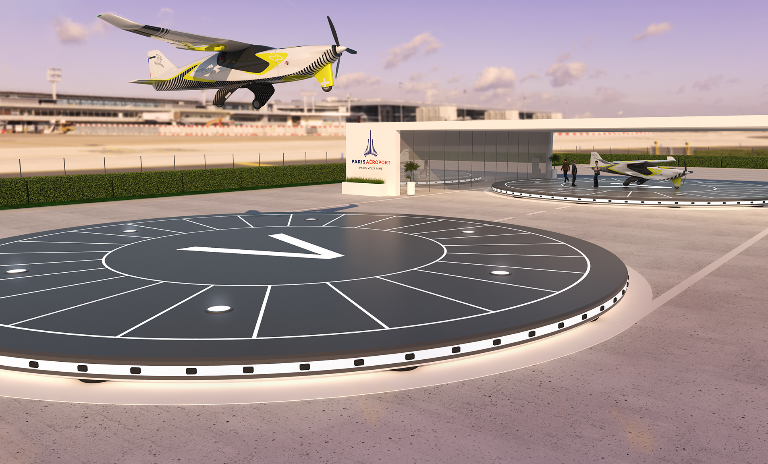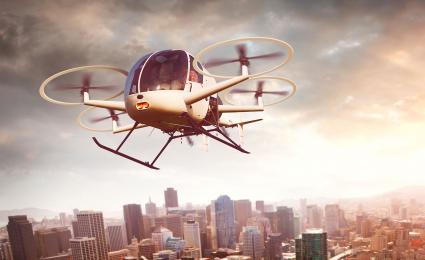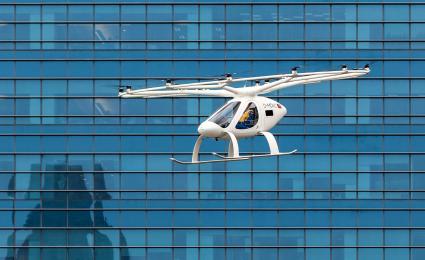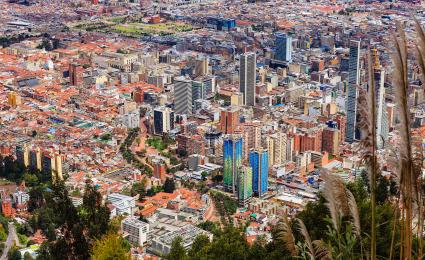Urban Air Mobility – an industry takes off. Investments are over 20 times higher than four years ago.


Urban Air Mobility: Designing vertiports following a non-exclusive ecosystem approach
By Manfred Hader and Stephan Baur
How Groupe ADP wants to act as the catalyzer in the development of UAM activities
Urban Air Mobility (UAM) is becoming a reality sooner as you might think: Groupe ADP, together with RATP Group, Paris Ile-de-France region and the French civil aviation authority (DGAC), has announced the setup of a UAM sandbox to prepare a service demonstration during the 2024 Olympic Games in Paris. This sandbox has gathered 30 partners in a call for expression of interests, called Re.Invent Air Mobility with the support of EASA and Eurocontrol. Groupe ADP wants to act as the catalyzer in the development of UAM activities in Paris by providing its assets, a unique ecosystem and expertise in airport infrastructure to build and test vertiports for UAM. Read in our interview with Alban Negret, who is also a professional drone pilot, about the exiting roadmap until 2024 and why he is looking forward to play in the sandbox environment.

What is the main reason for an airport provider to have a closer look at the topic of drones and UAM?
Alban Negret: The general interest in drones is not new to Groupe ADP. In fact, we have a longer history with drones through a variety of airport use cases. We first had contact with drones, when consumer drones became more capable of longer flights and higher altitudes and unfortunately private individuals started flying drones close to airports. Thus, we as Groupe ADP had to find a solution to protect the airport from uncollaborative drones and this is what got us into the drone industry. We founded a dedicated subsidiary, a company called Hologarde, with focus on systems development for drone protection together with the French civil aviation authority. Today, we are seeing drones as a means of service provider and we are investigating use cases such as inspection of buildings and runways or bird strike prevention (even glass washing that were experimented last year in Charles-de-Gaulle). Regarding passenger drones , however, we have thought about this topic since the first hype of air taxis in 2018. Although a lot of focus lies still on the eVTOL vehicle itself, we quickly realized that for successful operations the vertiport infrastructure, safe airspace integration and passengers service are crucial – and this is where Groupe ADP wants to support with our expertise.
"For successful operations, the vertiport infrastructure, safe airspace integration and passengers service are crucial – and this is where Groupe ADP wants to support with our expertise."
What is the ambition of Groupe ADP when it comes to vertiport infrastructure?
Alban Negret: Since the maturity of companies which want to build and operate vertiport infrastructure is still considered as low, Groupe ADP clearly wants to take the lead and positions itself at the forefront when it comes to vertiport infrastructure, operations such as passenger and aircraft handling, maintenance and energy supply as well as airspace integration. Since we own and manage the three Parisian airports Charles de Gaulle, Orly and Le Bourget as well as 11 airfields (incl. 1 heliport) we are very well positioned to support the Paris region in better connecting communities between airports, suburbs and city areas. Therefore, we have formed collaborative efforts together with RATP Group, the public transport provider in Paris that has complementary expertise (mobility service, demand modelling) and assets. Not only in France but internationally, as it not well-known, but ADP is also active in 25 airports operation worldwide.
And how does Groupe ADP envisions the future vertiport design for UAM?
Alban Negret: Groupe ADP follows a "non-exclusive ecosystem approach", meaning that we want to promote, develop and build an agnostic vertiport design. Currently, a lot of eVTOL manufacturers promote an own or preferred vertiport design, but we do not believe that there will be OEM-specific vertiport designs in the future. Instead, a unified infrastructure with a dominant design need to emerge where all eVTOL aircraft designs can operate (same approach as today's airports that accommodate Boeing, Airbus or Embraer aircrafts). This is a process we can already start today in order to shape regulations and standards very soon, since most of the basics for future vertiport designs can be drawn from today's helicopter operations and heliports – at least for piloted operations.
What are the main reasons for Paris Ile-de-France region by launching the Re.Invent Air Mobility initiative towards 2024?
Alban Negret: Well, the 2024 Olympic Games are of course a huge event for the whole Paris region with great marketing reach and international coverage– an ideal platform to also showcase our leadership position in Urban Air Mobility. The Paris region is very well suited for UAM operations, since there a lot of inhabitants (12 million) widely spread over the large metropolitan area. Furthermore, we want to establish Paris as one of the industrial hotspots for UAM to attract investors and create a significant number of new workplaces to strengthen Paris as one of the leading global aerospace hubs.
The Re.Invent Air Mobility initiative is structured around establishing partnerships across five buckets: Vehicle Development, Ground infrastructure, Airspace Integration, Operations and Public Acceptance – why did you choose these exact five categories?
Alban Negret: All of the five buckets are equally important, since these five describe all value chain aspects of UAM. Of course, there is a strong link between the first three buckets (Vehicle Development, Ground infrastructure and Airspace integration), but UAM will not only be a technical system but also has close links and thousands of interactions with the society – as every other transport system today. Therefore, we wanted to include the "community perspective" by adding the aspects of operations and public acceptance. One might argue that some aspects such as operations are not relevant today, but when it comes to UAM we need to think holistically in the ecosystem perspective and address all potential issues collectively with innovative partner companies, as every contribution might be relevant to find answers to these issues.
How did you conduct the partnership assessment? Which criteria did you look out for?
Alban Negret: We actually had a very consultant-like approach as we defined a set of fixed, unified criteria from the beginning and then objectively evaluated all 150 applications. For example, evaluation criteria were targeted around the maturity of the applications and solutions, since the timeline until the 2024 Olympic Games is short (at least for the aerospace industry and its long lead times) and we soon want to start testing. We have thus looked for companies which have a solution which can be directly implemented. Further criteria touched upon the team itself and the fit of this team with the Re.Invent Air Mobility initiative. Thus, we conducted interviews with the most promising companies to see if the team shares the same ambition and vision and if all parties were comfortable working with them over the next three years. We also looked at the innovative aspect of the application/solution and compared solutions to one another between applicants in the same category. Lastly, all companies should be self-financed, as there was no direct financial reward by participating in this initiative, even though we are already building dedicated consortium to look for European, national or regional funding opportunities.
What is the importance of partnerships in the nascent UAM industry?
Alban Negret: We believe partnerships are the only way to move forward, since only together and by incorporating many different perspectives one can cope with all the uncertainty of the nascent UAM industry. You can build Excel models based on assumptions, but at the end of the day you need the open discussion with others. We are engaging with eVTOL OEMs to discuss the future vertiport design – for example with Volocopter , with whom we have built up a long-lasting and trusting relationship. Without that relationship and trust, it gets very difficult to build the right product, as otherwise exchange of technical details will not happen.
What is the high-level roadmap until 2024?
Alban Negret: As we have finalized now the partnership process and selected around 30 companies for the Re.Invent Air Mobility community, we are currently in the process of structuring the work, fostering intra-community meetings and signing MoUs with the companies. The first major milestones for us is to open the "sandbox" this summer. The sandbox is our playing ground to test UAM. . It is on an airfield – not in the middle of Paris – but with a safe environment (ATM tower, firefighting personnel on-site). Here, we are currently building our first vertiport (unique in Europe), which will be completed this summer (construction is starting as we speak). Once the sandbox is ready to operate, we will start with flights campaign. It will be also used in the frame of the SESAR Joint Undertaking "CORUS X-UAM" project, overseen by Eurocontrol in order to test Unmanned Traffic Management (UTM) services in a real context, together with DSNA (French ANSP).
What are the main advantages of this "sandbox" approach?
Alban Negret: We like the idea of the sandbox incremental approach because we can test in a safe environment but still engage physically with the local communities. Public acceptance is one of the key pillars of realizing UAM, thus we really want – and need – to incorporate the people's perspective to let them see, test and feel UAM and collect their feedback whether or not they would use UAM as public transport option. It is a complete vertiport planning, construction and operations rehearsal before 2024. Last but not least, logistic use cases with remotely piloted drones could also be tested on site.
Can you share already some details regarding the planned UAM operations for the 2024 Olympic Games and afterwards?
Alban Negret: Our goal is to have built up a first version of the UAM system as realistically as possible for the Olympic Games. We aim to operate 1-2 routes as first showcases in line with all regulatory frameworks and with different eVTOL OEMs. Until 2030 we imagine up to ten vertiports within the Paris region connected by various UAM routes.
Thank you very much for the provided insights! We are looking forward to the 2024 Olympic Games and excited to see first results from the sandbox!

-Black-and-White_person_144.png?v=770441)





